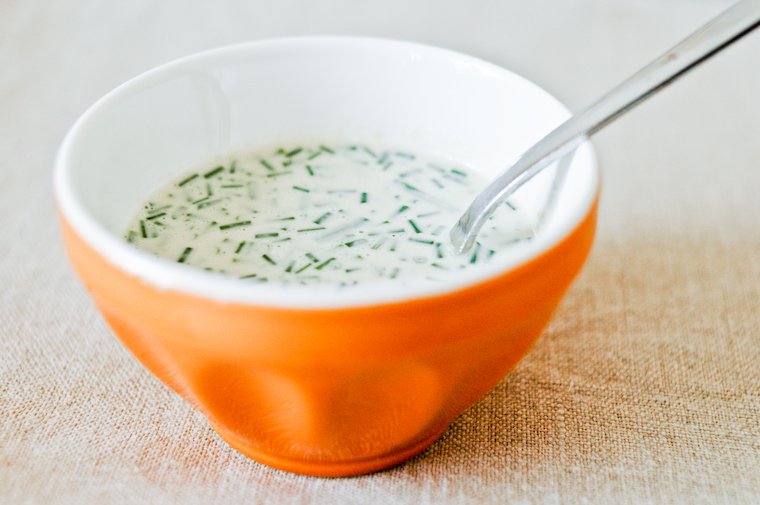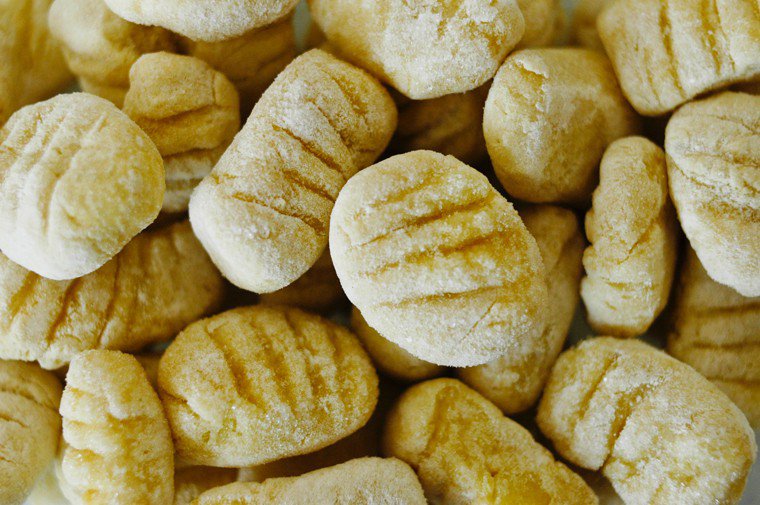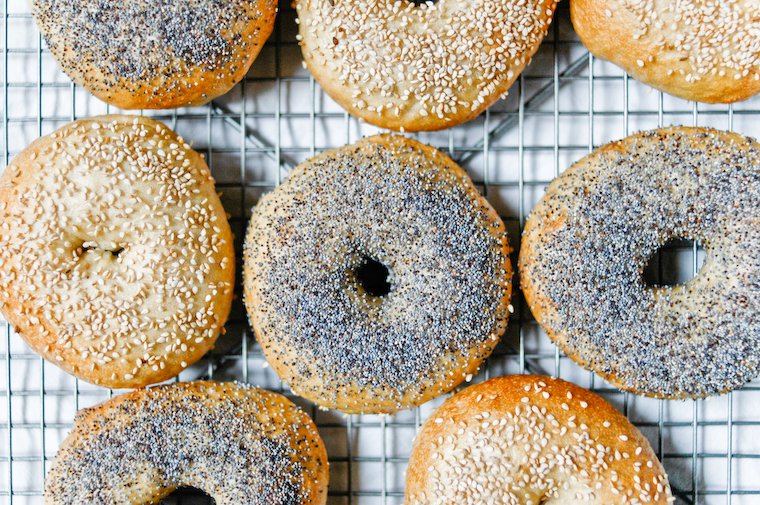When Maxence and I were in San Francisco late last summer, we had bagels for breakfast every single day. There were a couple of bagel shops not far from where we were staying, so we alternated between the two, and on those mornings that we went for a run through the Golden Gate Park, bagels awaited at a busy coffee shop by the ocean.
I like mine dotted with poppy seeds or sesame seeds, and spread with cream cheese and a juicy slice of tomato. And thanks to a reader who recently suggested the pairing, I’ve also taken to topping my bagels with peanut butter and a juicy slice of tomato. (I know, I was skeptical too, but try it: I think you’ll be surprised.)
On our last day, sad that our vacation was coming to an end and sad to be leaving the city, I saw this one way of making myself feel better: I promised myself I’d bake bagels for us back in Paris. It would at least alleviate the withdrawal symptoms on that particular front.
If you’re unfamiliar with the way bagels are made, the most characteristic thing you should know is that they are cooked in two steps: first you poach them in a pot of water, then you bake them in the oven.
Oh, sure, I’ve found bagels in Paris in the past, and you can even buy them from the ubiquitous chain of frozen foods stores (they come with a bunch of emulsifiers and preservatives, if you’re into that sort of thing), but it’s never been quite the same.
So I turned to Peter Reinhart* and his Bread Baker’s Apprentice book for guidance, compulsively reviewed the posts of every single BBA challenger who had followed his bagel recipe, and, on an afternoon when it seemed I could not sit at the computer for a minute longer, I fled to the kitchen and started up a batch. (Evidently, procrastination is a rich soil for baking projects.)
If you’re unfamiliar with the way bagels are made, the most characteristic thing you should know is that they are cooked in two steps: first you poach them in a pot of water, then you bake them in the oven. And for some reason, the poaching step had always seemed daunting to me: what if I dropped them in and they fell apart, or dissolved, or sank to the bottom of the pot and never floated back up? Would I have to hire divers and send them on a recovery mission to salvage the sunken bagels? Reinhart didn’t seem to suggest that this might happen, so I forged ahead.
Before I got to that point, though, I’d had to overcome two procurement hurdles. First, bagels must be made with flour that has a high rate of gluten: in the US, you would make them with high-gluten flour or bread flour. Unfortunately, French flour is significantly lower in gluten than American flours — it has to do with the different types of wheat that we grow and mill — and as Jane had warned me from her past experience, it would not work. So, my mission was to find powdered wheat gluten that I could add to my flour to boost its gluten content.
The bagels were fantastic, and just what I was hoping for: great flavor and just the right density and chewiness, the perfect carriers for the all-natural, chunky peanut butter I brought back from California.
Second, part of what gives bagels their distinctive flavor is that the dough is lightly sweetened with barley malt, in powder or syrup form. In France, this goes by the names of sirop d’orge, malt d’orge or sirop d’orge malté. I had to try a few organic food stores, but I ended up finding both of these ingredients at the same one**; I almost hugged the cashier.
I mostly stuck to Peter Reinhart’s method, except for a few things: I modified the recipe to use some of my sourdough starter in the sponge (enough to produce a final 1-to-3 ratio between starter and flour) and reduced the amount of commercial yeast. I also halved the recipe (his produces 12 large bagels; I made 8 medium).
I took some liberty with the order of the steps, too: Peter Reinhart’s recipe has you make the dough, shape the bagels, lay them out on baking sheets, and then leave them overnight in the refrigerator (a step called retarding), before you poach and bake them the next day. The thing is, I have a Paris-sized fridge that is stuffed to the gills with, well, food, and the notion that I should just free up two (of the four) shelves to place baking sheets for the night is heroic fantasy.
So, instead of shaping the bagels pre-retarding, I simply placed the ball of dough in the fridge (it was a challenge just to make room for the bowl) and shaped it the next day. I was not struck by the wrath of the bagel gods during the night, so I assume it wasn’t too big of a commandment to break.
The whole process was a lot of fun, and much less involved than I thought: the dough is rather stiff, which makes it easy to handle once kneaded (though I hear it’s quite a workout to knead it by hand), and the poaching step went surprisingly smoothly.
As for the bagels themselves, they were fantastic, and just what I was hoping for: great flavor and just the right density and chewiness, the perfect carriers for the all-natural, chunky peanut butter I brought back from California. Now, if only I could persuade my neighborhood grocery store to carry cream cheese, I’d be all set.
* I just stumbled upon this video of a talk Peter Reinhart gave on bread, via Nicole’s blog. I can’t imagine anyone watching it and not wanting to bake bread right this minute.
** I found malt syrup and wheat gluten at the Biocoop store at 73 rue du Faubourg Poissonnière in the 9th (map it!), 01 44 79 06 44, open Mon-Sat 9:30am-8pm.

Continue reading »









